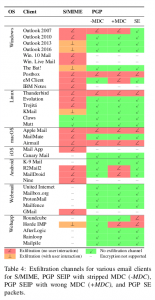
Today we are going on a little journey through time for a current occasion. Are you ready? Then jump into the fountain together with Frog King!
Many, many years ago, when grandmother was still a little girl, it may have been in 1995, a hardworking man named Mark Shuttleworth started a certificate issuing service in his poor parents’ garage, just like CAcert is one.
The name of this service was Thawte. Thawte was a great and important service. It is said that it covered half of the empire at that time. And because he was so old and so wise, he enjoyed some privileges. When Uncle Netscape, the browser, introduced new rules for certificates, Aunt Thawte, considering her age, only had to comply if she wanted to.
Now it was the case in those days that some people would have liked to send letters in an envelope. Good Aunt Thawte said: I have so many envelopes, I will give you some! And everyone who booked a free e-mail address with her got the certificate to wrap the messages as a gift. The Web of Trust was created to ensure that everything was above board and that the big bad wolf didn’t pretend to be one of the seven little goats. There, the letter writers met with the most trustworthy men and women of the entire empire for the knighting.
After the wizard Verisign took over Aunt Thawte’s service in 1999, the Web of Trust’s noble round table was abolished a few years later. Its members were very surprised to be thrown out of the castle just like that, since they had selflessly served the cause as noble knights and notaries.

However, it was a stormy time. And the storm wind blew a big sailing ship with full rigging from New South Wales, a spot of earth on a big island in the middle of the big, wide sea in the New World, across the ocean. Its name was emblazoned in gold letters on the stern: CAcert.
The captain held the wheel with both hands until the ship docked in a safe harbour. Immediately the crew rushed ashore to the desperate notaries and knights of the Thawte Round Table and offered to take them in their ship.
Numerous were those who gratefully accepted this offer, even more so when the captain said that he trusted Aunt Thawte. So it happened that large parts of Thawt’s Web of Trust were integrated into CAcert’s Web of Trust and the Thawte notaries became CAcert assurers. In a special program named Tverfiy, they could have their trust points transferred in 2009. Today, more than a decade later, CAcert is discontinuing the corresponding web site, after a long time since scattered notaries have joined CAcert’s community.
Further reading:
https://wiki.cacert.org/Tverify
https://en.wikipedia.org/wiki/Thawte#Web_of_Trust
old blog posts from the time

